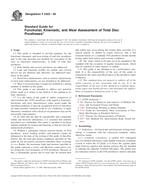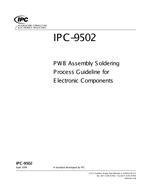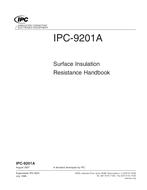ASTM F2423-05
$35.00
Standard Guide for Functional, Kinematic, and Wear Assessment of Total Disc Prostheses
standard by ASTM International, 11/15/2005
Description
1.1 This guide is intended to provide guidance for the functional, kinematic, and wear testing of total disc prostheses and, to this end, describes test methods for assessment of the wear or functional characteristics, or both, of total disc prostheses.
1.2 Both lumbar and cervical prostheses are addressed.
1.3 Load and kinematic profiles for lumbar and cervical devices are not identical and, therefore, are addressed separately in the guide.
1.4 Partial disc replacements, such as nucleus replacements or facet joint replacements, are not intended to be addressed.
1.5 Wear is assessed using a weight loss method in a testing medium as defined in this guide.
1.6 This guide is not intended to address any potential failure mode as it relates to the fixation of the implant to its bony interfaces.
1.7 It is the intent of this guide to enable comparison of intervertebral disc (IVD) prostheses with regard to kinematic, functional, and wear characteristics when tested under the specified conditions. It must be recognized, however, that there are many possible variations in the in vivo conditions. A single laboratory simulation with a fixed set of parameters may not be universally representative.
1.8 In order that the data be reproducible and comparable within and between laboratories, it is essential that uniform procedures are established. This guide is intended to facilitate uniform methods for testing and reporting of data for total disc replacement prostheses.
1.9 Without a substantial clinical retrieval history of IVD prostheses, actual loading profiles and patterns cannot be delineated at the time of the writing of this guide. It therefore follows that the load and motion conditions specified by this guide do not necessarily accurately reproduce those occurring in vivo. Rather, the maximum loads and motions specified in this guide represent a severe and therefore conservative case for testing the wear properties of IVD prostheses. Because of this, a substantially greater rate of wear may be realized than that which may occur during the routine daily activities of a typical patient. It should be noted, however, that a full characterization of a candidate IVD prosthesis should include testing under both typical and extreme conditions.
1.10 The values stated in SI units are to be regarded as the standard with the exception of angular measurements, which may be reported in either degrees or radians.
1.11 This guide is not intended to be a performance standard. It is the responsibility of the user of this guide to characterize the safety and effectiveness of the prosthesis under evaluation.
This standard does not purport to address all of the safety concerns, if any, associated with its use. It is the responsibility of the user of this standard to establish appropriate safety and health practices and determine the applicability of regulatory limitations prior to use.
Product Details
- Published:
- 11/15/2005
- Number of Pages:
- 10
- File Size:
- 1 file , 190 KB
- Note:
- This product is unavailable in Russia, Ukraine, Belarus




